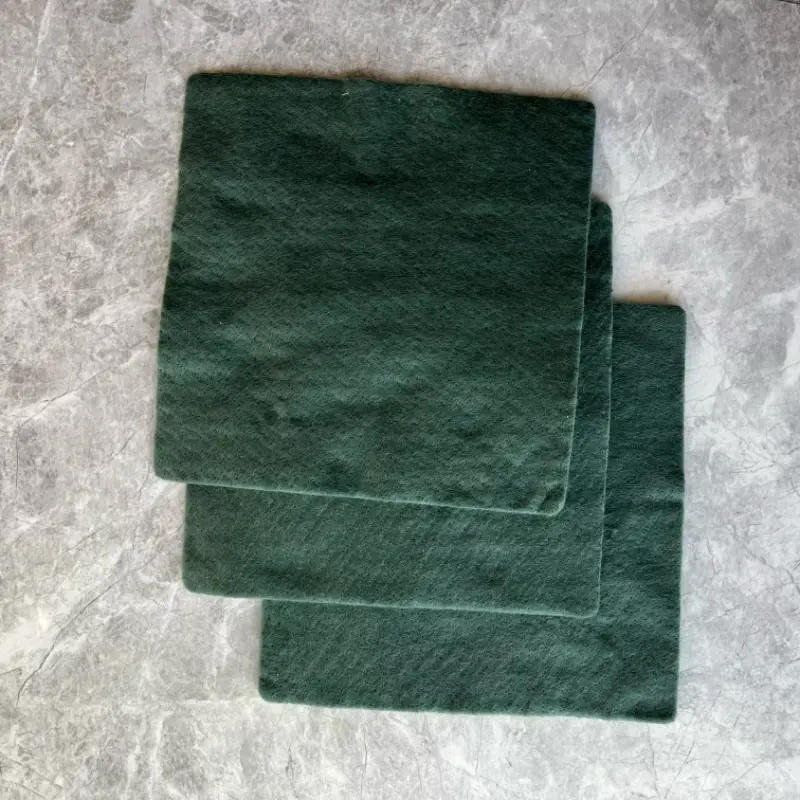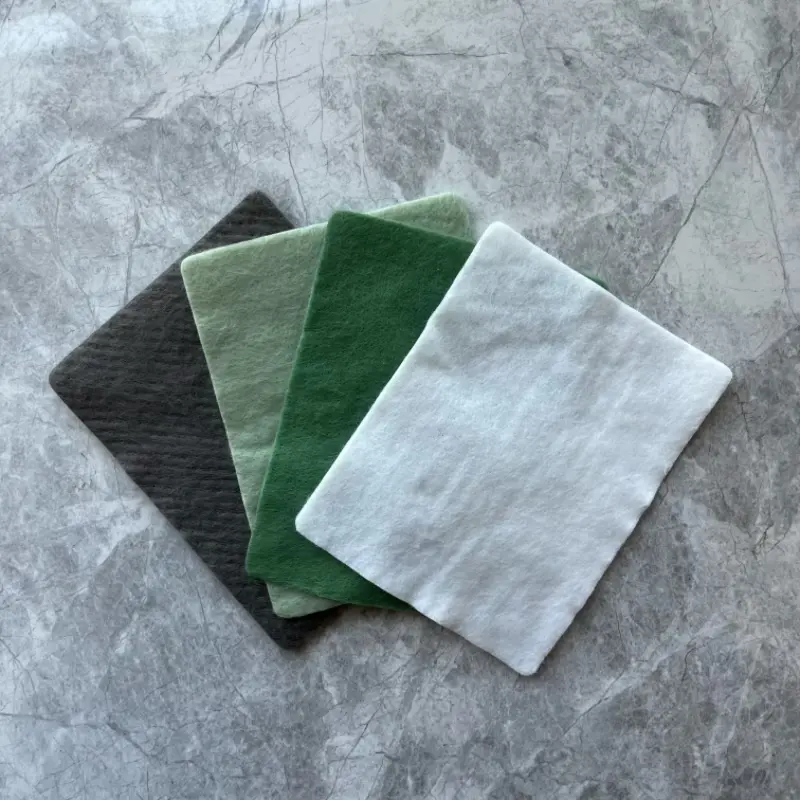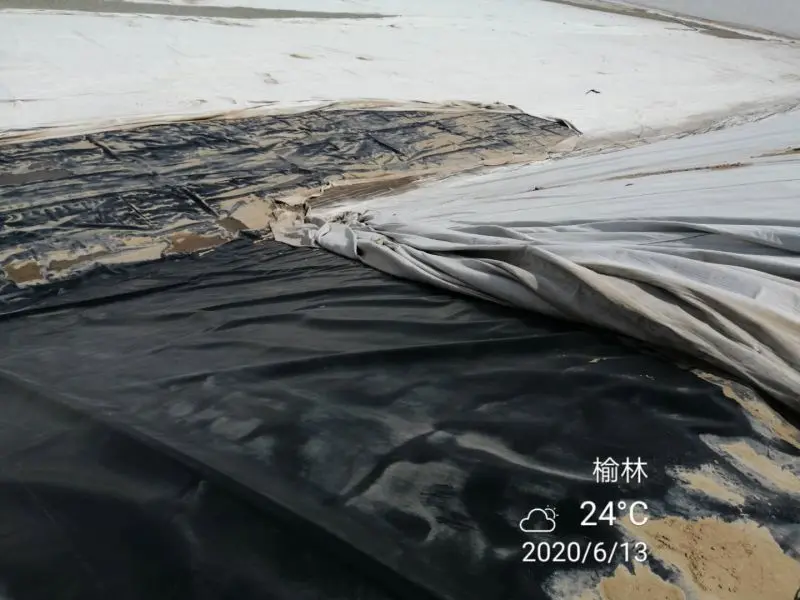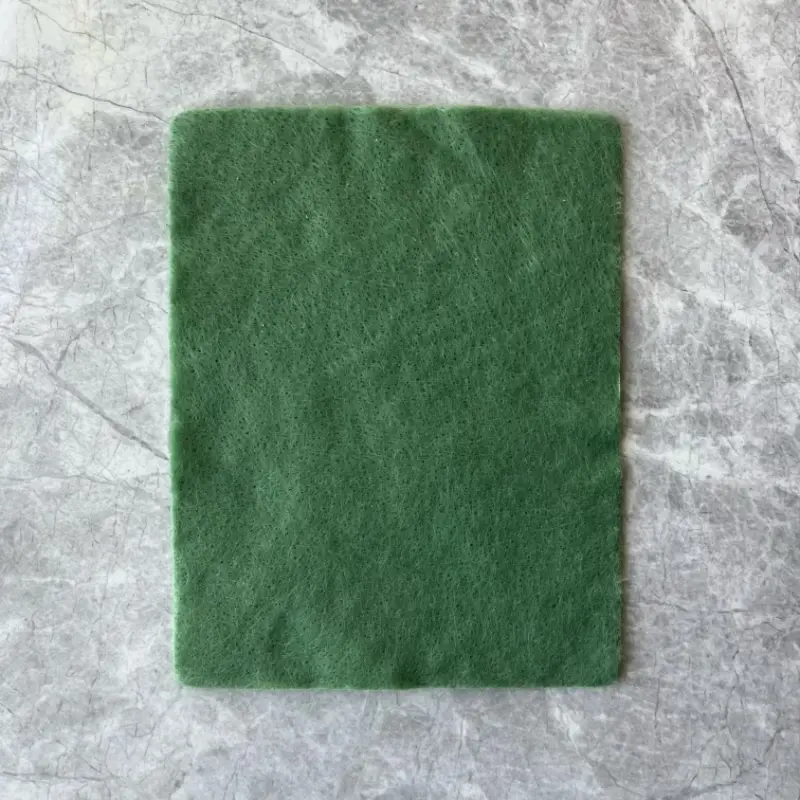Landfills are critical components of waste management systems, necessitating robust engineering solutions to address environmental concerns and ensure long-term stability. Non-woven geotextile fabric has emerged as an indispensable material in landfill infrastructure, offering a range of benefits that contribute to the overall efficiency, environmental protection, and sustainability of waste containment.
What is nonwoven geotextile fabric

Nonwoven geotextile fabric is a type of engineered material made from synthetic fibers that are bonded together mechanically, thermally, or chemically, rather than being woven together like traditional textiles. It is commonly used in civil engineering and construction projects for various purposes such as filtration, separation, drainage, erosion control, and reinforcement. Nonwoven geotextiles are designed to withstand environmental factors like UV exposure, moisture, and chemicals, making them durable and versatile for use in applications such as road construction, retaining walls, landfills, and drainage systems.
Filament and staple fiber geofabric

Filament and staple fiber geofabrics are two types of nonwoven geotextiles used in civil engineering and construction projects.
1, Filament Geofabric: This type of geofabric is made from continuous filaments of synthetic fibers, such as polyester or polypropylene, which are extruded and then bonded together. Filament geofabrics are known for their high tensile strength and durability. They are commonly used in applications where high strength and long-term stability are required, such as in road construction, embankment reinforcement, and erosion control.
2, Staple Fiber Geofabric: Staple fiber geofabrics are made from short, randomly oriented synthetic fibers, known as staples, which are mechanically or thermally bonded together. These geofabrics are more flexible and conformable compared to filament geofabrics, making them suitable for applications where filtration, separation, and drainage are primary concerns. Staple fiber geofabrics are often used in projects such as subsurface drainage systems, landscaping, and erosion control blankets.
Both filament and staple fiber geofabrics offer advantages in different applications, and the choice between them depends on factors such as project requirements, site conditions, and budget constraints.
Why is Non-woven Geotextile Fabric Used in Landfills

Non-woven geotextile fabric is widely employed in landfills for several reasons:
1, Anti-seepage Function: Non-woven geotextile fabric serves as a barrier against seepage by creating a impermeable layer. This prevents leachate, which is a liquid formed by rainwater percolating through the waste, from contaminating groundwater or nearby soil. By effectively containing the leachate within the landfill boundaries, the risk of environmental pollution is significantly reduced.
2, Enhanced Stability: Landfills are subject to settlement and deformation due to the weight and decomposition of the waste materials. Non-woven geotextile fabric reinforces the landfill structure, distributing the load more evenly and reducing the likelihood of settlement or collapse. This enhanced stability ensures the long-term integrity of the landfill and minimizes the need for costly repairs or maintenance.
3, Drainage Capability: Geotextile fabric possesses excellent drainage properties, allowing liquids to flow through while retaining soil particles. In landfills, this capability is crucial for managing leachate and rainwater runoff effectively. By facilitating drainage within the landfill, non-woven geotextile fabric helps prevent ponding, which can otherwise lead to instability, odors, and breeding grounds for pests.
4, Erosion Control: Exposed soil surfaces in landfills are susceptible to erosion from wind, rain, and other environmental factors. Non-woven geotextile fabric acts as a protective barrier, preventing soil erosion and minimizing the risk of sedimentation in nearby water bodies. This erosion control measure helps maintain the structural integrity of the landfill and prevents soil contamination in the surrounding area.
5, Increased Cover Thickness: Landfills require a sufficient thickness of cover soil to contain odors, prevent waste dispersion, and promote vegetation growth. Non-woven geotextile fabric, when installed at the bottom of the landfill, effectively increases the thickness of the cover soil layer. This additional thickness enhances the effectiveness of the landfill cover system, improving odor control and environmental protection measures.
In summary, the use of non-woven geotextile fabric in landfills addresses multiple challenges associated with waste containment, stability, drainage, erosion control, and cover system effectiveness. These benefits contribute to the overall environmental sustainability and operational efficiency of landfill facilities.
FAQ
1, Question: What role does non-woven geotextile fabric play in preventing environmental contamination in landfills?
Answer: Non-woven geotextile fabric serves as an anti-seepage layer in landfills, preventing leachate from waste materials below from seeping into groundwater or soil, thus reducing environmental contamination risks.
2, Question: How does non-woven geotextile fabric contribute to the stability of landfills?
Answer: By enhancing stability, non-woven geotextile fabric helps minimize settlement or collapse of waste materials within landfills, ensuring the long-term integrity and safety of the landfill structure.
3, Question: What is the significance of drainage capability in landfills, and how does non-woven geotextile fabric facilitate it?
Answer: Effective drainage is crucial in managing leachate and rainwater runoff within landfills. Non-woven geotextile fabric possesses drainage properties that allow liquids to flow through while retaining soil particles, thereby aiding in proper landfill drainage and reducing the risk of ponding.
4, Question: How does non-woven geotextile fabric contribute to erosion control in landfills?
Answer: Acting as a protective barrier, non-woven geotextile fabric helps prevent soil erosion on exposed surfaces within landfills, minimizing the risk of sedimentation in nearby water bodies and maintaining the structural integrity of the landfill.
5, Question: In what way does non-woven geotextile fabric help increase the effectiveness of landfill cover systems?
Answer: Non-woven geotextile fabric, when installed at the bottom of landfills, effectively increases the thickness of the cover soil layer, enhancing odor control, preventing waste dispersion, and promoting vegetation growth, thus improving the overall effectiveness of landfill cover systems.

897.webp)
942.webp)
237.webp)